What is the Shrine Project?
During my residency at Studio KURA in 2013 in Itoshima in southern Japan, I visited many local shrines and temples. It was a very rural area. Sadly, many of the shrines, especially smaller ones that no longer had dedicated priests, were in disrepair; and centuries-old paintings at the shrines were being rapidly lost due to weather damage. These artworks often depict important events in local history and culture. Many were only 20-30% still visible. I thought about what a huge loss it would be if these paintings and they cultural information they contain disappeared forever, and then had the idea to digitally re-create these paintings and, with the help of area residents, write down a record of what events and historical figures are depicted in the paintings.
In addition, around this time I purchased a small collection of very old books containing Japanese hanga prints. These books were printed in the 1700s and 1800s, and many of them are also heavily damaged by age, weather, and insects. These books are by noteworthy creators, but ones who are almost completely unknown in the West, and whose work even many Japanese citizens may not have seen in entirety before. I felt that these hanga prints too contained a lot of valuable cultural information, and I decided to add recreations of images from these hanga booklets to my Shrine Project as well. In particular, I would like in the future to write on this website about the events shown in the hanga prints, in particular for the benefit of those in the West who are interested in learning about Japanese history from these unique perspectives.
Later, when I traveled to Nagano Prefecture as part of another residency, I found that the same thing was happening to many paintings at shrines, temples, and even castles there. Some shrines or temples, especially ones that were smaller or up high in the mountains, no longer had the manpower to protect, restore, or archive the paintings. I decided that I wanted to create the Shrine Project as an online resource to restore, preserve, and share these paintings, not only for the benefit of the shrine or temple itself but also as a means of cross-cultural arts education for people back in America and even in other countries. I believe that cultural exchange and cross-cultural education, especially for children but even for adults, are some of the keys to a successful and peaceful future; and an understanding of international historical events is an important part of this.
Upcoming Shrine Project Works
Illustration by Kunisada Utagawa from a book by Tanekazu Rukatai, published in 1857.

Illustration by Kunisada Utagawa from a book by Tanekazu Rukatai, published in 1860.

Two illustrations from “Shinshotaikoku” volumes 6 and 11, by Oze Hoan. Published around 1808.
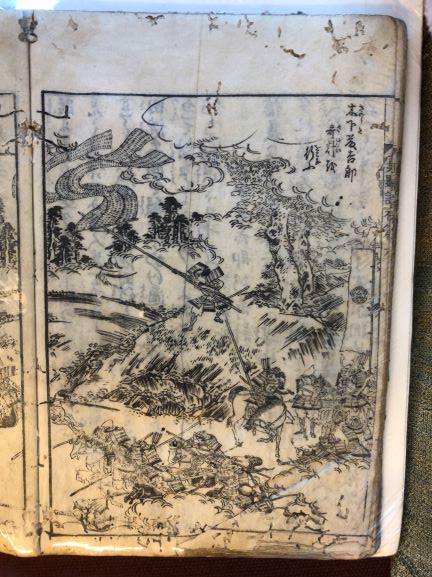

Paintings from shrines located in Itoshima (Fukuoka Prefecture) in southern Japan
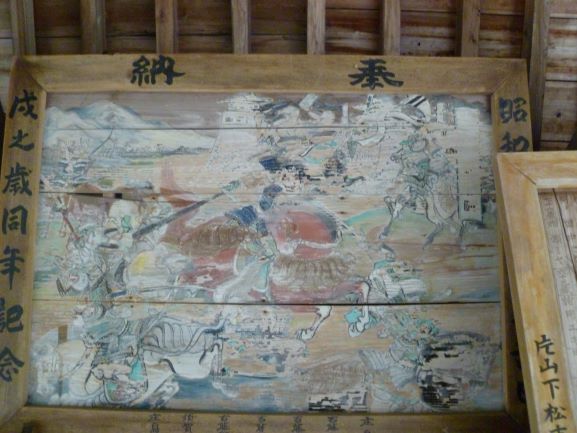




Painting located in Komoro (Nagano Prefecture) in eastern Japan

Completed Shrine Project Works Gallery
For each of these paintings, I took many photographs of the original painting in the shrine or temple, and then recreated it either as an acrylic ink painting or a digital painting in Adobe Photoshop. I work to fill in the parts of the paintings which have been erased by time and weather with thematic continuity, researching the era in which the painting was made so that I can paint the armor and dress accurately. The descriptions and information are based upon research done online and in the locale of the shrine or temple.
This section is still under construction. Eventually, I plan to have photos of all the original paintings at their current location, my reproduction painting, as well as more detailed and complete information about the contents of each painting.
1. Women and Children with Interrupting Cat
From one of the books in my hanga collection, “Kinseitsu Bishounen Roku,” by Bakin Hikkei; published in 1832.
Original Recreation
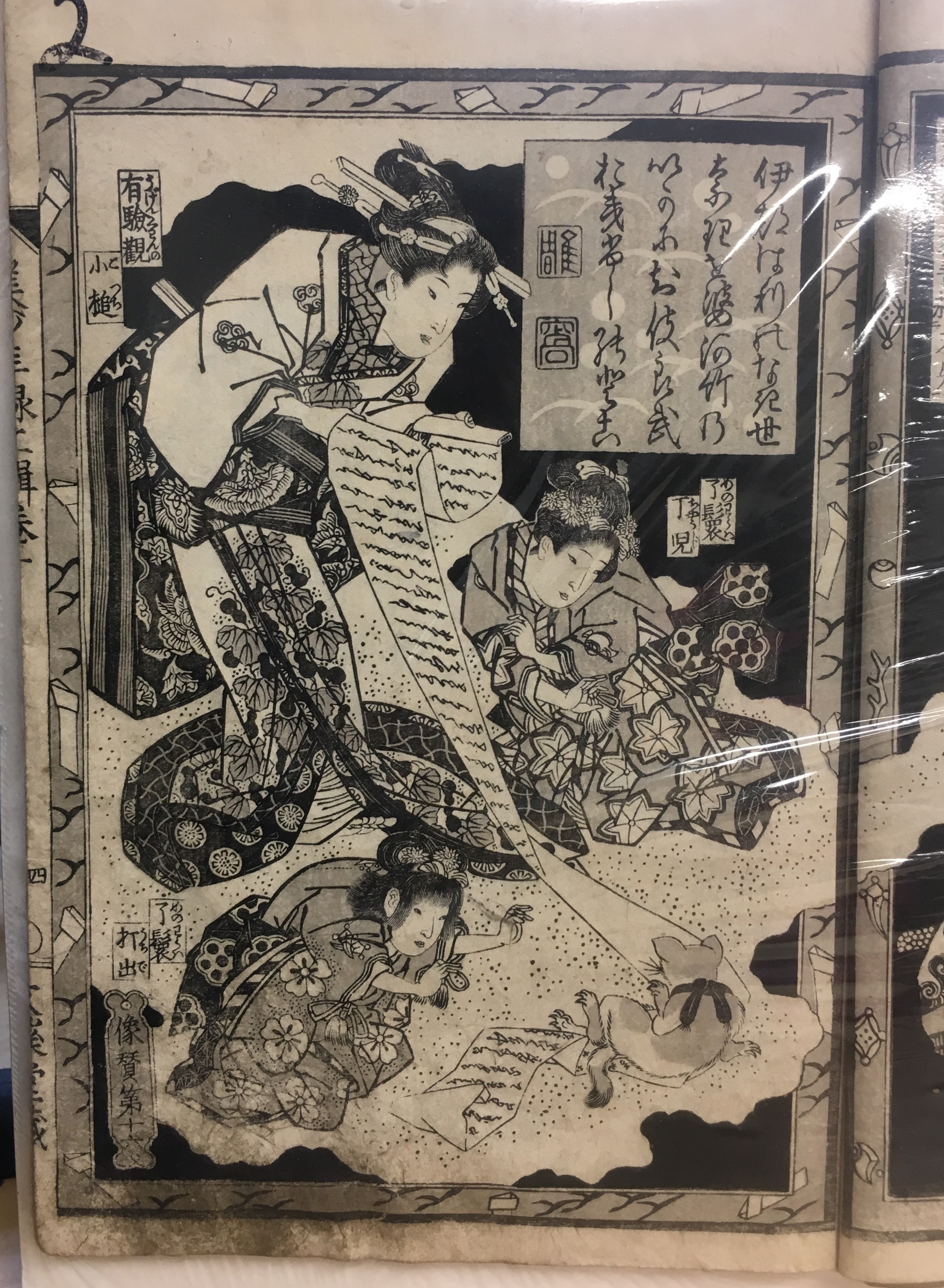

2. Sea Spirit
Local protector and deity for fishing village of Nijo
Original painting commisioned by Hideyoshi Toyotomi
Toyotomic had a specific connection with Nijo. He had heard they had particularly fine sea food, and and while visiting the town he was informed of the birth of his 2nd son. He did not feel this was a random act, but saw Nijo as having special place in his life because of that.
The original painting was in a small shrine near Studio KURA in Itoshima. The image was so damaged that nearly all the blue color was gone (perhaps 10-15% remaining).
Original Recreation


3. Daimyo Greets Ships


4. Daimyo and an Assassin

Recreation

5. Komoro Castle Courtyard

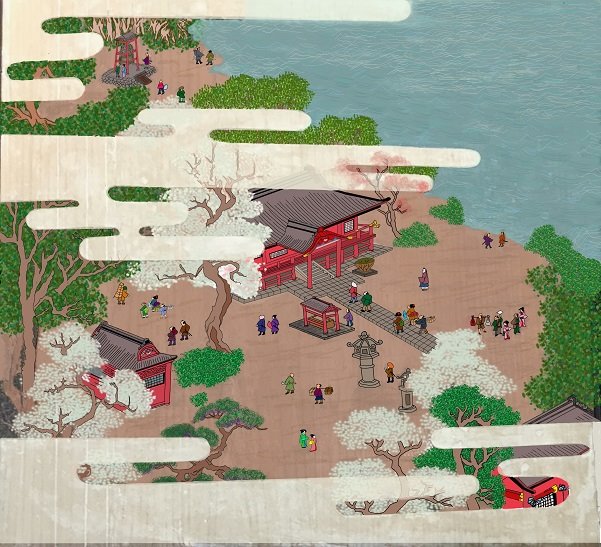
6. Komoro Castle Outer Wall
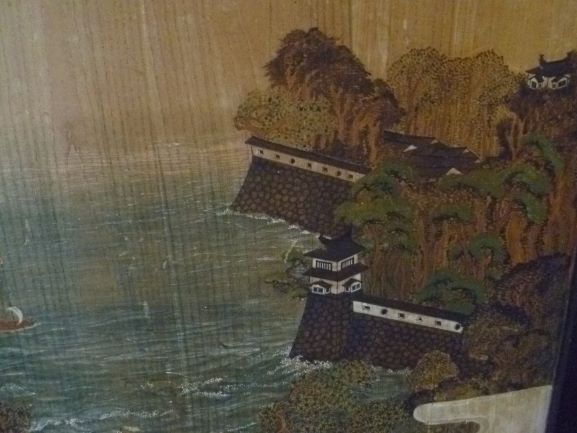

These are the three locations I am aiming to visit next, although these plans may change. If you have visited a shrine or temple in Japan and noticed paintings or artworks that are in danger of being lost or further damaged by weather and age, I would love to hear from you.
(artwrkx@gmail.com)
I’d also like to broaden the scope of the Shrine Project if I can, to include artists in other rural areas to do similar research with their local shrines.
This website is still under construction and the Project is still in early stages, but eventually I envision images of all the Shrine Paintings (both the original damaged artwork and the digital restoration) as well as information on what each one depicts being available to view in an expanding online database which will include art from all over Japan.
I have also turned one of the Shrine Paintings into a large-scale mural in West Reading, Pennsylvania; and hope to create more such murals in the future both to spread awareness of this project and to allow more people to access these images.
